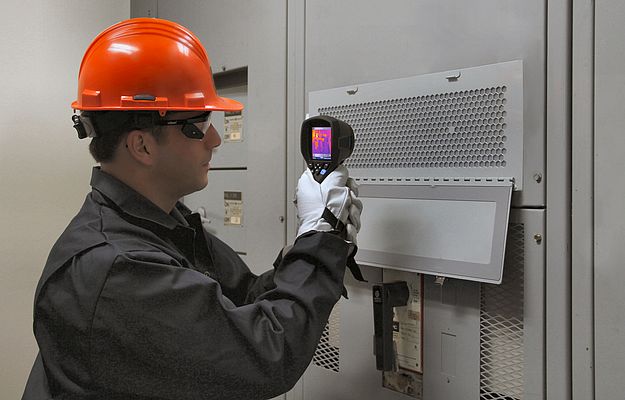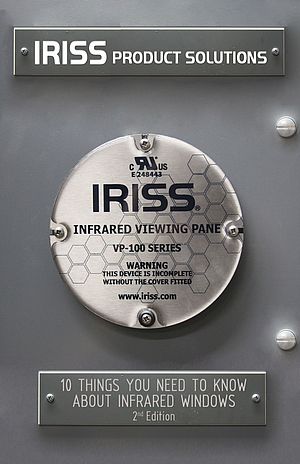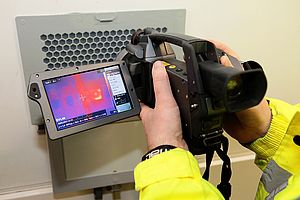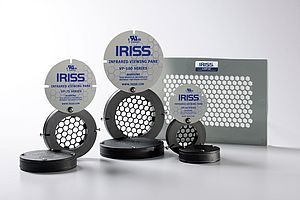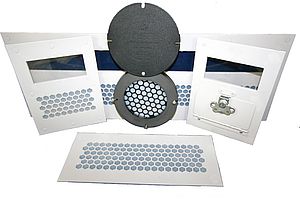Manpower analysis based on the experience of a power generation company shows a significant return on investment.
As a condition of its insurance cover, a power generating company was required to perform regular preventive maintenance on its switchgear. Regular downtime was not a practical option for the power plant and the hazardous nature of this inspection by traditional means required more manpower and resources than the facility could provide. Management began to re-think its strategy, especially as safety guidelines for the inspection of energized equipment was making the procedure more restrictive, time consuming and costly.
Multiple benefits
It knew that best practise is to keeping energised components and circuits in a safe and guarded condition - in other words, fully enclosed. The hazard is then equal to reading a panel meter, using a visual inspection pane for lockout confirmation or walking past an enclosure. The installation of infrared windows in the panels would therefore give the best of both worlds, the ability to detect potential faults with thermal imaging whilst ensuring employee safety.
Indeed, company's insurers had already undertaken the necessary research and determined that the power plant could achieve a reduction in hazard liability and maintenance costs through the use of infrared windows. The benefits included:
- Safe inspection of energised components
- Inspection possible during peak hours to obtain the best, quantitative and qualitative, diagnostic data
- Elevated PPE levels no longer needed, minimising time taken to put the kit on and take it off
- Site thermographers accomplish the inspection task on their own without the need for electricians to remove the panels
- Electricians free to undertake other tasks including those that are normally outsourced
- Increased inspection frequency viable ensuring plant uptime
- Critical systems once considered 'uninspectable' become 'inspectable'
Inspecting the 'uninspectable'
The overall focus was to facilitate inspection of the primary switchgear in the facility's electrical distribution system and several smaller operations within the plant. An impending shutdown increased the sense of urgency, since the first phase of the installation could be fitted during that period.
IRISS performed an on-site inspection to determine the optimal position and quantity of windows that would give thermographers thorough visibility of the desired targets. It became clear that none of the primary switchgear or transformers had been included in previous inspections, they were considered to be too hazardous when energised.
The primary goal of phase 1 of the installation of infrared windows was therefore to bring this equipment into the standard inspection routes without any compromise on personnel safety. A time study was then completed detailing the man-hours and costs involved with and without infrared windows.
Time taken for traditional inspection
The power generation company had previously been using outsourced thermographic services, with the survey crew comprising two in-house electricians and one contract thermographer.
- 19 days would be required to inspect the first phase of equipment under consideration for IR windows installation
- The entire inspection team would be dressed in 40 Cal/cm2 recommended for energized work
- Getting kitted out and dressing down would occupy 30 minutes, twice a day - 88 hours over the 19 day period
- The thermographer's waiting time while panel covers were opened and closed by electricians amounted to 186.4 hours
- The electricians waiting time, while the thermographer conducted his survey, was 29.4 hours for two men - 58.8 hours
This meant a 94% of the total project time for traditional open-panel surveys was non-productive.
Time taken for inspection with infrared windows
Not only could windows offer considerable time savings but also provide a working environment that is both safer and fully standards-compliant. Surveys could also be conducted during periods of peak load without elevating the risk to plant assets, processes or people.
As a result, 203 IRISS windows were installed during routine shutdown and here's the comparative analysis.
- All primary switchgear and transformers instantly became 'inspectable'
- The entire inspection task is now a one man job - no need to remove panels or wear increased levels of PPE
- Total man hours for inspection has dropped to just 33
- Cost of inspection is just 10% of the traditional process
- The company is saving 90% on its cost of maintenance
Clearly the cost of installing windows needs to be taken into consideration, but the return on investment was swift. After just five inspection cycles, the facility was recording savings that amounted to 66% more than the windows installation cost. And because the inspections could be completed with greater ease and without additional risk, the facility was able to increase inspection frequency to four per annum.



